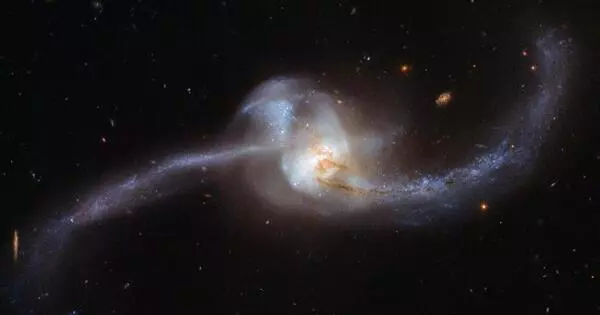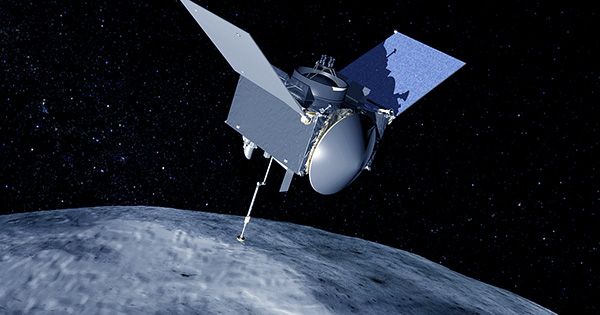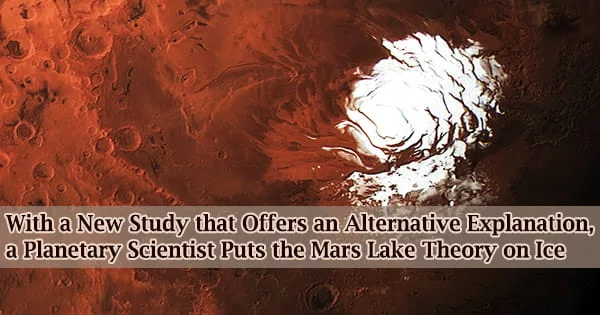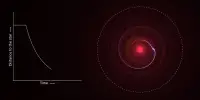Interacting galaxies (colliding galaxies) are galaxies whose gravitational fields disrupt each other. These are galaxies that are close to each other and exert gravitational forces on each other, resulting in a variety of interactions and effects. A satellite galaxy disturbing the spiral arms of the primary galaxy is an example of a minor interaction. These interactions have the potential to have a large impact on the shapes, structures, and evolution of the galaxies involved. A galactic collision, which may result in a galaxy merger, is an example of a major interaction.
Satellite interaction
It is common for a massive galaxy to interact with its satellites. The gravity of a satellite could attract one of the primary’s spiral arms. Alternatively, as in the Sagittarius Dwarf Elliptical Galaxy diving into the Milky Way, the secondary satellite can dive into the primary galaxy. This may result in a small amount of star formation. Before they were recognized as stars, such orphaned star clusters were referred to as “blue blobs.”
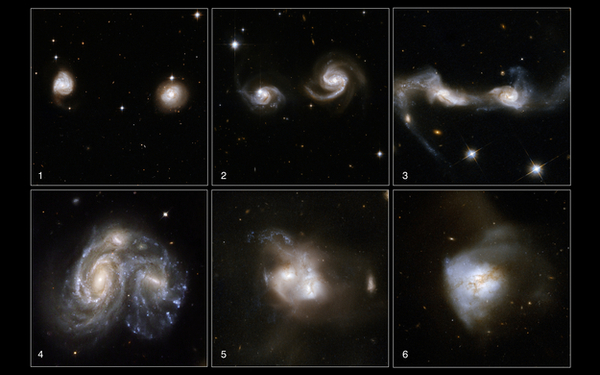
There are several types of interactions that can occur between galaxies:
- Tidal Interactions: Tidal effects can occur when two galaxies are close to each other due to gravitational forces. These effects distort the shape of galaxies, resulting in long tidal tails and bridges of stars and gas. Tidal interactions can also cause star formation as the gas and dust within galaxies compress and collapse due to gravity.
- Galaxy Mergers: The gravitational forces between two galaxies can be so strong that they merge to form a single, larger galaxy in some cases. Galaxy mergers are complicated processes that can last millions or billions of years. The gas, dust, and stars in the galaxies interact during the merger, resulting in the formation of new structures such as massive starbursts, active galactic nuclei, and elliptical galaxies.
- Ram Pressure Stripping: When a galaxy moves through the hot, ionized gas within a galaxy cluster, it can experience a stripping effect known as ram pressure stripping. The gas within the galaxy is forcefully removed, which can influence its star formation activity and shape. This interaction can be particularly noticeable in spiral galaxies, as their gas disks are more vulnerable to stripping.
- Galaxy Cannibalism: Larger galaxies in dense galaxy clusters can gravitationally capture and merge with smaller satellite galaxies. The larger galaxy gradually absorbs the smaller galaxy’s stars, gas, and dust, causing the larger galaxy to grow. This is known as galaxy cannibalism or galactic harassment.
Interacting galaxies provide astronomers with valuable insights into the processes that shape and evolve galaxies over time. They can help explain the formation of various galaxy types, the activation of star formation, and the growth of supermassive black holes at galactic centers. Observations of interacting galaxies have been made using a variety of telescopes and instruments at various wavelengths, including radio, infrared, optical, and X-ray observations.
